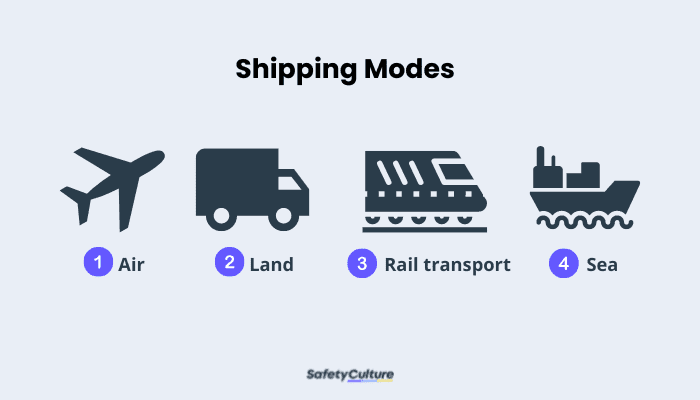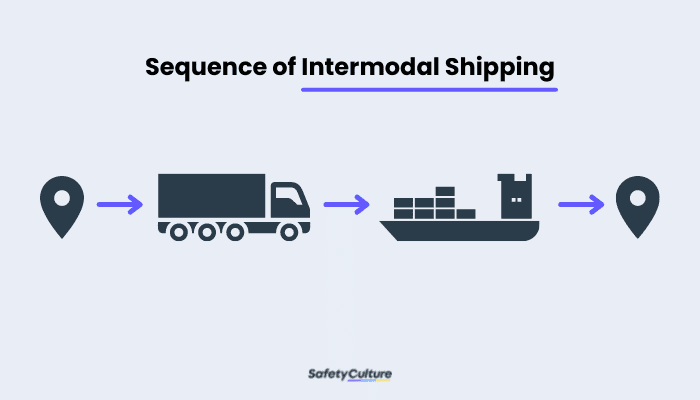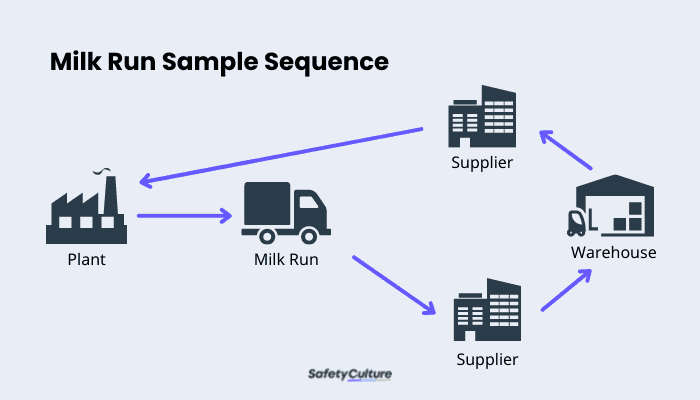Defining Shipping Management
In defining shipping management, synonymous terms pop out that are important to understand the meaning of this process.
- Shipping—pertains to the activity of transporting goods from one place to another by ship or by some other means
- Shipment—pertains to the group of goods or bulk orders that ranges from a small, document envelope to a full-sized containers
- Freight—pertains to the transportation of large shipments in bulk by truck, train, ship, or aircraft
- Logistics—pertains to the day-to-day management of the flow of goods including supply chains and distribution, between their point of origin (e.g. the warehouse) to the point of consumption (e.g. address of consumer)
Therefore, shipping management is the process of ensuring a smooth shipping of goods, raw materials, freight, equipment, or supplies which involves assorting, weighing, handling, packaging, inventory, warehousing, transportation, distribution, security, compliance checks, and managing of data collected for recordkeeping. It involves a series of activities, including gathering retail inventory from shelves and packaging items, such as stage packages, for shipment pickups.
In other words, shipping management is the logistics (planning, preparation, and execution) of shipment transportation to ensure that it will be delivered to retail stores, customers’ addresses, or to their point of destination.
Different Shipping Modes
It should be noted that, contrary to what the term “shipping” implies, shipment does not simply refer to the transport of goods by ship. It also includes the movement of goods by rail, road, and air. All these are included in the types of modes of transport of shipment.

Shipping Modes
- Shipping through air— this pertains to using aircraft to transport goods; Shipping companies such as FedEx, DHL, and UPS were some of the most popular ones to do this kind of shipping.
- Shipping through land—this pertains to using vehicles such as trucks to transport goods; some of the vehicles used include refrigerated trucks, autos, heavy vehicles such as semi-trailer trucks, jumbo trucks, and many more.
- Shipping through rail transport—this pertains to the delivery of goods via rail transportation; rail transportation is one of the oldest modes of transportation for goods such as consumer goods, hazardous goods, special cargoes, military cargoes, and other types of cargoes, among some other items.
- Shipping through sea—this pertains to transportation of goods by means of a ship. Some of the biggest shipping companies doing ocean freight are A.P. Moller–Maersk Group of Copenhagen, Denmark and China Ocean Shipping (Group) Company (COSCO) of Beijing, China.
8 Methods of Shipping
There are various methods of shipping that are used in delivering freight. They include:
- Full Truckload (FTL) Shipping—this pertains to using an entire vehicle or fleet of trucks for land transportation of goods. FTL is the shipping method preferred by the top retailers in the world such as Schneider National. In this method of shipping, examples of the kinds of trucks used are refrigerated trailers, dry van (enclosed) trailers, semi-trucks, dual-temp and multi-temp vehicles.
Examples:
- Delivery of products that are extremely fragile or delicate
- Shipments that are large enough to completely or nearly completely fill a shipping container
- Less Than Truckload (LTL) Shipping—this pertains to sharing spaces between different parties in a truck; this is much cheaper but it can take longer for shipments to arrive. The top two LTL carriers in the U.S. according to Logistics Management Magazine in 2020 are FedEx Freight and Old Dominion Freight Line.
Example: Delivery of products that are sturdy and well-packaged - Flatbed Shipping—this pertains to not requiring a top enclosure on a truck while transporting items in this manner. Goods are delivered via trucks such as flatbed carriers.
Example: Delivery of building and construction materials - Intermodal—this pertains to shipping goods by means of intermodal transport of different modes of shipping; Containers, known as intermodal containers or ISO containers are the most common form of equipment used in intermodal shipping.
Example: To illustrate this, the shipment or container that might arrive by sea, will be transported to by truck, where it is picked up by a vehicle for delivery to the consumer

Sequence of Intermodal Shipping
- Rail Service Shipping—this pertains to the transportation of entire containers or trailers using rail transport services.
Examples: Bulk goods such as agriculture and energy products, vehicles and components, building materials, chemicals, equipment, food, metals, minerals, paper, and pulp make about 52% of rail freight according to the Federal Railroad Administration - International Air And Ocean Freight Shipping—this pertains to timely shipping of foods and other perishable goods by means of traveling by air and ocean freight into different global points; this could mean seaport to seaport or terminal to terminal. Air freight is frequently more expensive than ocean freight, depending on the amount of goods being transported.
Example: Delivery of cargo by means of air freight or ocean freight to other countries - Tanker—this pertains to shipping by means of a tanker ship, that is designed for the transportation or storage of large quantities of liquids or gases.
Examples: Transportation of oil, chemicals, gas and liquids such as vegetable oils, molasses, and wine, among other things - Drops/ “Milk Runs”—this pertains to shipping wherein goods are replenished on a routine route at a central distribution location, which is where the goods are shipped from, or transporting items from several suppliers or warehouses to their final destination.
Example: Delivering new bread and collecting leftovers are handled by the suppliers, who send their own delivery vehicles to the supply center.

Types of Shipping Strategies
Shipping companies have created strategies to attract more consumers or reduce shipping costs in delivering goods such as “Free shipping.” Here are the more popular shipping strategies:
- Expedited Shipping—this means prioritized shipping or delivering the shipment at the earliest possible time.
Essentially, this is a shipping strategy wherein shipping companies speed their delivery by not giving any points for the vehicle to stop along the route. Faster deliveries are further classified as:- Express shipping
- Same-day shipping
- Next day shipping
- Flat Rate Shipping—this is also known as “Linear Shipping” or the ‘One Price, One Product Size’ strategy. It refers to a fixed rate given to all types of items, regardless of their contents or measurements.
- Multi-Carrier Shipping —this is a kind of shipping strategy for small items or shipments; this uses different carriers to reduce the shipping costs.
There are a lot more different shipping strategies that shipping companies or business owners can do. All kinds of shipping strategies, regardless of shipping small items or large containers, need shipping management to ensure that items will get to the right destination smoothly.
Create Your Own Shipping Log Template
Eliminate manual tasks and streamline your operations.
Get started for FREEImportance
Below are more benefits of having proper shipping management:
- Better Customer Experience
Having proper shipping management also entails setting clear expectations with your chosen shipping strategy. You need to be transparent to customers about shipping delays, natural disasters, carrier delays, or whatever reason or concern that might hold up the customers’ package. - Lower Delivery Costs
Having proper shipping management minimizes incidents wherein goods take longer to get to their point of destination. Improving the quality of shipping in your business should result in a noticeable increase in the total profit margins of your business. - Improved Cash Flow
When planning deliveries, it is important to consider not only the expenses, but also the delivery times, as well as the reliability and accuracy of the shipments as well. Having proper shipping management cuts delivery time to customers. This also relates to the supply chain management which is part of logistics. This results in customer satisfaction that also results to buyers availing again. - Wider Reach
Businesses that manage air or ocean freight will benefit from having a proper shipping management system in place since they will have established relationships with all of the main international logistics companies.
SafetyCulture (formerly iAuditor) for Transport and Logistics
The goal of shipping management is to increase sales through improving warehouse efficiency, speeding order processing, and streamlining inventory management. Achieve these goals by integrating SafetyCulture, the best digital tool used by businesses for conducting inspections, inventory management, supply chain monitoring, and tracking shipments.
With SafetyCulture, you can:
- Carry out inventory checks in order to collect the goods from the warehouse and transport them to the shipper by using inventory checklists.
- Record shipment details and track shipping status with shipping log templates.
- Collect and record order information to help in packing items in pallets of the same content, weight, and dimensions.
- Label the parcels, boxes, or pallets, as well as the entire shipment, in order to provide the best possible trackability.
- Conduct compliance checks on containers or cargo (e.g. customs clearance or ISO containers) using inspection templates that you can customize to prepare them for the shipper.
Inspect your vehicles for shipping to ensure that they are ready for the transportation of goods by using safety checklists such as the Pre-trip Inspection Checklist.



